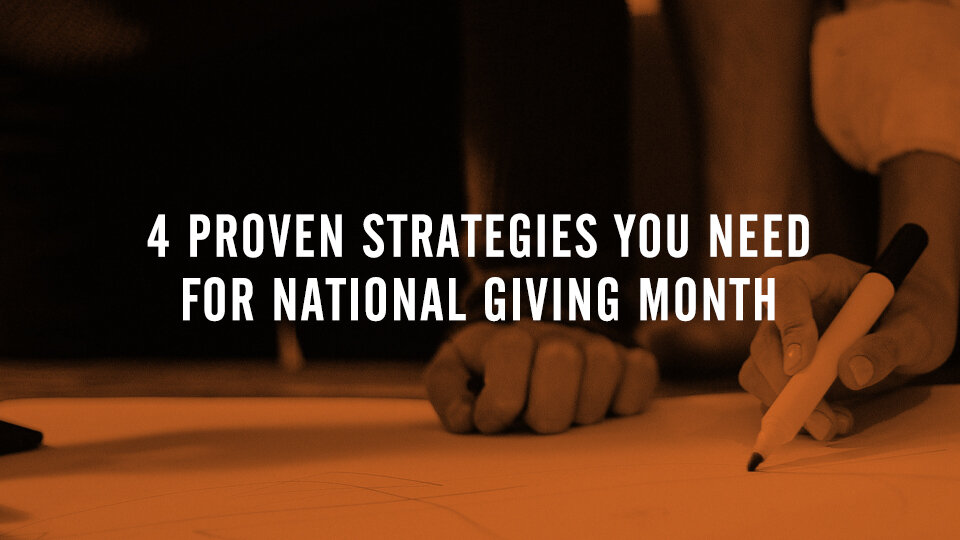4 Strategies You Should Consider for Year-End Fundraising
By Maurilio Amorim
One-third (31%) of annual giving occurs in December. If you have not started planning your year-end giving campaign, let’s get started!
According to the World Giving Index, Americans have been the number one country for generosity for the past ten years.
Giving by individuals reached an estimated $41.19 billion in 2020, up 10.3% from 2019, and this year we expect that number to go even higher.
As you think through your year-end giving campaign, here are 4 strategies you should keep in mind.
Tap Into the Power of the Visional Gift.
What’s a visional gift?
It’s a gift that moves your vision forward. It captures the imagination of your donors and helps them see where you want to go and not just where you are: “Next year we want to serve a thousand new people.”
Granted, you still have to take care of overhead and fund operations, but that’s a means to an end. Your end is always aspirational and bigger than where you are today.
Donors want to be a part of something impactful. Their visional gift is always more than any other type of gift.
Make an Appropriate Ask.
You don’t ask your legacy donors as you do of your monthly givers who have just started their giving journey with you.
Do your homework and understand what’s important to your major donors. Understand not only what they gave in the past, but why they gave. What part of your nonprofit keeps them engaged and giving. If you understand the why, then you can tailor your ask appropriately.
If you have monthly givers who have been giving $25 a month, ask them to consider giving at $35 or $50 a month. Also, give your monthly givers a reason to make an end-of-year special donation. I remember getting a $15,000 gift for the nonprofit I lead from a person who had only given $25 per month. The special gift came as a much-needed surprise.
Professionals often get year-end bonuses and stock options. Sometimes just mentioning them in your appeal will trigger someone to give.
Use the Proper Communication Tool.
The more you understand your audience, the more you can customize your ask. For your major donors, it might start with a text and an invitation to meet face-to-face or over a Zoom call.
For mid-tear givers, you might have a personalized sequence of 3 or 4 emails that talk about the vision for 2021 and how they can make a difference.
For your entry-level donors, you might use another email sequence and share with them how much more impact they can have with just a small increase in their donations.
It’s tragic when I see nonprofit leaders sending only one email or letter to their entire donor list with a generic ask. That’s not only insulting to some of your donors but irresponsible to your nonprofit.
Accelerate After Christmas.
This one kills me! If you don’t remember anything else from this post, remember this:
12% of all annual giving happens in the LAST 3 DAYS of the year! That’s almost a month of your salaries, rent, supplies, fees.
This means that if you lead a nonprofit or are in charge of development, your job is NOT done at Christmas. Make that last week count!
I remember being on a beach in Mexico on December 31, getting a text from a nonprofit I support reminding me that it was the last day before my gift would count as a tax deduction for that year.
It worked. I donated a significant amount while sitting on a beach chair.
Some nonprofit leaders have a hate/love relationship with money. They need money to grow their mission, but they hate asking for it.
I learned long ago that asking money for something that changes lives and makes a difference in my community and world is a privilege and not a burden.
After all, I get not only to help a worthy cause, I also help people to live beyond themselves and show gratitude in tangible ways.
I hope you keep these tenets in mind as you plan and execute your year-end appeal.














